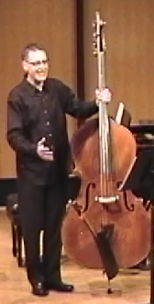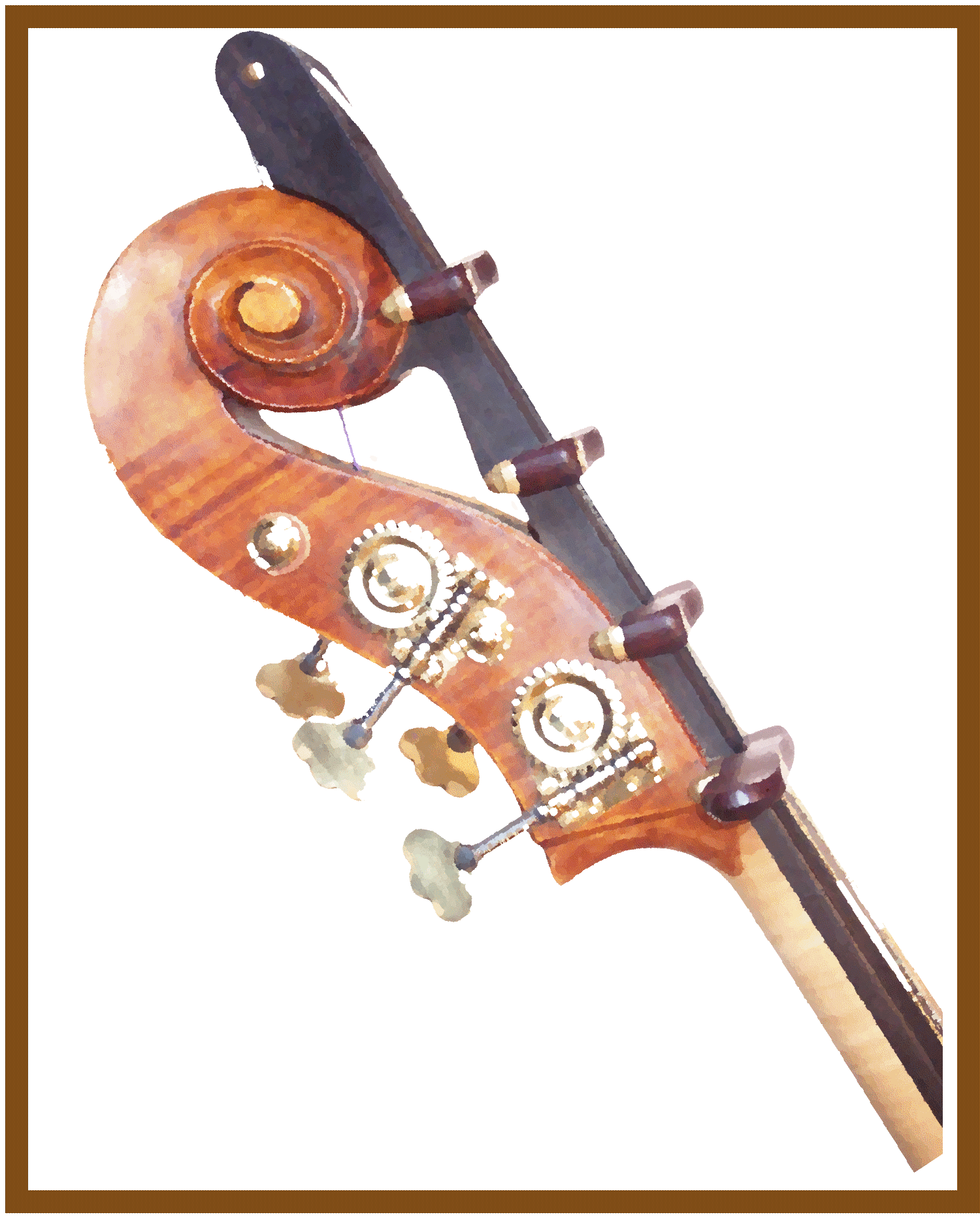To learn: read. To know: write. To master: teach.

Teaching artistry is a natural progression for some private music teachers.
A Teaching Artist is a professional musician posessing the complimentary skills of artistry and group engagement.
I continue to hone my skills as a Teaching Artist by giving clinics to middle and high school string orchestra programs.
I also give low-string sectionals, master classes, mock auditions and can do side-by-side bass mentoring during your orchestra classes.
- (30m) Double Bass Bassics. If chocolate could sing, it would sound like the double bass, so says double bass virtuoso Gary Karr. I introduce myself to the students and play something nice (bowed and plucked) to tune their ears into the beautiful voice of the double bass. Then I teach the French and German bow holds, how to properly tension the bow hair and apply rosin, set the endpin height and proper posture both standing and sitting. I also give overview of the reference points on the finger board, and introduce the 1-2-4 fingering concept. Students will learn a simple melody like Ode to Joy, both plucked and with bow. At the end, I give out information on my private teaching studio in hopes of getting students.
- (60+m) Double Bass (or low-strings) Sectional. I'll come and lead a sectional with your bassist (and cellists), addressing the critical spots in their current concert repertoire. I'll share tips for developing a better section sound.
- (60+m) Master class and/or mock auditions. For soloists or chamber ensembles, I'll give a master class and/or mock auditions for your string orchestra students. I'll provide constructive verbal feedback for making a better performance.
- (30m) Electric bass for the double bassist. We bassists are among the most versatile of musicians; being called upon to play a wide range of styles, including styles better suited for the electric bass, such as rock and funk. Often times, in the same gig, we’ll have both our upright and electric basses at our side. I’ll share you some tips with you on how to minimize the differences between these two instruments, and help make the transition from one to the other as easy as possible. Individual electric basses, cords and at least one amplifier required (I’ll bring a 6-channel mixer and my own amp).
- (30m) Jazz bass technique for the orchestral bassist. The bow being the primary differentiator between jazz and orchestral bass styles, the orchestral bassist must develop a strong right hand pizzicato technique to make the cross-over to plucked bass styles such as jazz, bluegrass and rock. I’ll give you some foundational tips for developing your right hand pizzicato chops. Everybody bring a bass to the party.
- (30m) Get out there and jam some. The most common jamming opportunities for the upright bassist are bluegrass jam sessions. If you’ve never been to one, it can be exciting and fun. Using my guitar, I’ll teach you a couple of easy bluegrass tunes to get your feet wet, leaving you with information on local bluegrass jams and related events. Everybody bring a bass to the party.
- (30+m) Amplification for the double bass. I’ll share with you some basic information on amplifying the DB: Pickups, microphones, instrument/amplifier placement on the band stand, EQ and managing feedback. I’ll bring a collection of mics and pickups to play with; you bring at least one other bass to the clinic, and whatever mic/pickup/amp you may already have. Could run over 30-minutes if we have a lot of equipment to play with.
- (30+m) Classical bowing styles for string orchestra. Music from the 18th century masters (Haydn, Mozart, Beethoven) typically require a good 8th note spiccato, some quarter note shaping, and connected (on string) 16th notes. In this clinic I have developed a unique, engaging, and time-efficient approach to teaching spiccato with proven results (Conifer High School, and in my private studio). Using your current classical repertoire (ideally), we'll put what we learn into practice.
- (60m) Tone production for string orchestra. If they sound good, mistakes in rhythm and intonation can be forgiven. Tone production should be your first priority with young string players. The individual elements of tone production: bow placement, bow speed and bow arm weight, can be isolated and experienced separately, in an engaging way, across the entire group. The goal of the clinic is to inspire the young players to place the highest value on the process of finding their own voice (tone production) over flashier tendencies, such as sheer velocity (speed). Using simple unison melodies (for example: slow, lyrical version of Ode to Joy) the ensemble will experience a collective improvement in tone production that will hopefully carry forward into their concert repertoire.

